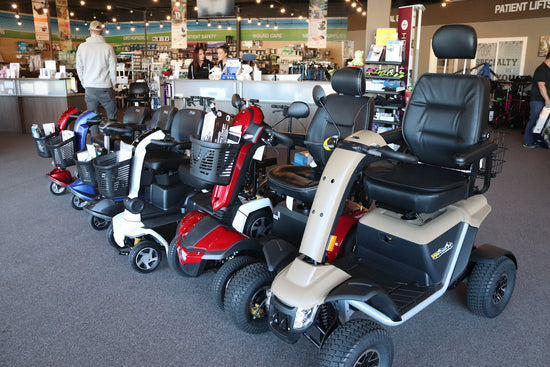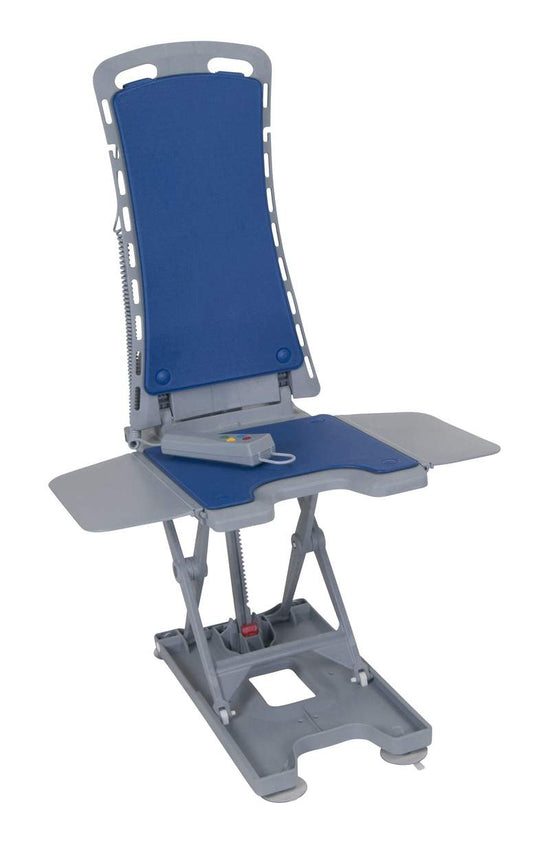As we age or encounter physical challenges, maintaining mobility and independence can become increasingly difficult. Walkers offer an effective solution for individuals who require additional support and stability while moving around.
Whether you are considering a walker for yourself or a loved one, this comprehensive guide will provide valuable insights for first-time users. We will explore the various types of walkers available, discuss their benefits, and share practical tips to ensure a safe and comfortable experience. So, let's dive in and learn how to make the most of this essential mobility aid.
Understanding the Different Types of Walkers
Before delving into the world of walkers, it is crucial to understand the various types available and their unique features. This will help you make an informed decision about which walker best suits your individual needs and preferences. In this section, we will discuss four primary categories of walkers: standard walkers, two-wheel walkers, rollators (four-wheel walkers), and specialty walkers.
1. Standard walkers
Standard walkers, also known as basic or non-wheeled walkers, provide maximum stability and support. They typically consist of a lightweight metal frame with four legs, each ending in a rubber tip or glide cap. To use a standard walker, you lift and move it forward slightly, then step into it, repeating this process as you walk. While this type of walker offers unparalleled support, it may not be ideal for those with limited arm strength or those who find lifting the walker cumbersome.
2. Two-wheel walkers
Two-wheel walkers, sometimes referred to as front-wheeled walkers, feature wheels on the front two legs and rubber tips or glide caps on the rear legs. The wheels allow for smoother movement, reducing the need to lift the walker entirely while walking. This design is especially beneficial for those with limited arm strength or balance issues, as it requires less effort to move forward. However, keep in mind that two-wheel walkers may offer slightly less stability compared to standard walkers.
3. Rollators (four-wheel walkers)
Rollators, or four-wheel walkers, are equipped with four wheels and often include additional features such as hand brakes, a seat, and a storage pouch or basket. These walkers are designed for individuals who can maintain a more consistent walking pace and require moderate support. The hand brakes ensure safety by allowing users to control the speed and lock the wheels when needed. The built-in seat offers a convenient resting spot during longer walks or while waiting in line. Rollators are generally more maneuverable than other walkers but may not provide the same level of stability as standard or two-wheel walkers.
4. Specialty walkers
Specialty walkers cater to specific needs or conditions, offering customized support and features. For example, hemi-walkers are designed for individuals who can only use one hand or have limited mobility on one side of their body. Bariatric walkers are built with a wider frame and reinforced materials to accommodate users with higher weight capacities. Upright walkers, also known as posture walkers, encourage users to maintain an upright posture while walking, reducing strain on the wrists, shoulders, and back. Depending on your unique needs, a specialty walker may be the best option for you.
Assessing Your Mobility Needs and Requirements
Before selecting a walker, it's essential to evaluate your specific mobility needs and requirements. This will ensure that you choose the most suitable and effective mobility aid for your situation.
- Physical limitations and strength: Consider your upper body strength, balance, and range of motion when determining which walker type best accommodates your needs.
- Indoor vs. outdoor use: Some walkers are better suited for indoor use, while others are designed to handle various terrains outdoors. Consider where you'll primarily use your walker.
- Frequency and duration of use: Analyze how often and for how long you'll need a walker. Frequent users may benefit from additional features like seats or storage compartments.
- Assessing your living environment: Examine your home's layout, including the width of doorways, the presence of stairs, and floor types, as these factors can impact your walker choice.
Choosing the Right Walker for You
Once you've assessed your mobility needs, it's time to select the most suitable walker. Here are some factors to consider while making your decision:
- Size and adjustability: Ensure that the walker is adjustable to accommodate your height for optimal comfort and support. A correctly sized walker will prevent strain and promote proper posture.
- Weight capacity: Check the weight limit of the walker to ensure it can safely support you. Bariatric walkers are designed for higher weight capacities.
- Material and durability: Opt for a walker made from high-quality materials like aluminum or steel for longevity and reliable support.
- Additional features and accessories: Depending on your preferences, consider walkers with added features such as hand brakes, seats, storage pouches, or specialty attachments like cup holders and cane holders.
Folding Walkers
Clever Lite Walker Rollator, Adult, 8" Wheels
Blue Clever Lite Walker by Drive Medical: a versatile rollator that doubles as a seat and traditional walker. With an easy-to-fold dual lever release, this walker features a soft, flexible backrest for seated comfort and stability. Effortlessly switch caster wheels from "swivel" to "fixed" for smooth transport on various surfaces. Enjoy a limited lifetime warranty and lifetime brake cable coverage.

Heavy Duty Bariatric Two-Button Walker with Wheels
Bariatric Aluminum Two Button Folding Walker by Drive Medical, designed for individuals up to 500 lbs. This wider, deeper frame offers added strength without extra weight. Experience enhanced stability with the "U" brace, steel legs, and side brace. Enjoy a smooth walk with 5" dual front wheels, eliminating the need to lift the walker with each step.

Trigger Release Folding Walker
Deluxe Trigger Release Folding Walker with 5" Wheels by Drive Medical, designed for easy closing without removing hands from the handle - perfect for those with limited finger dexterity. Its durable composite trigger release can be used by all hand sizes and ensures safety. Enjoy improved, soft, ribbed, contoured handgrips for pressure relief. The lightweight aluminum frame provides strength and durability, while the 5" wheels, rear glide caps, and glide covers allow for smooth transport on most surfaces.

Knee Walkers
All-Terrain Knee Walker Knee Scooter, Crutch Alternative
990X Knee Walker: a rugged, versatile solution for active individuals recovering from below-the-knee injuries or surgery. Its sturdy steel frame and four large, never-flat knobby wheels offer exceptional stability and maneuverability indoors and outdoors, on various terrains. Suitable for right or left-leg use, this knee walker boasts adjustable features for a comfortable, smooth ride. Don't let life's curveballs slow you down – stay in the game with the 990X Knee Walker.

DV8 Aluminum Steerable Knee Walker Knee Scooter Crutch Alternative
Experience pain relief and faster recovery with the Steerable Knee Walker from Drive – a durable, comfortable alternative to crutches for those suffering from foot surgery, breaks, sprains, or ulcers. Say goodbye to crutches' discomfort and embrace smooth mobility with four-wheel stability and safety. Maneuver around obstacles effortlessly with fully steerable front wheels and tackle outdoor terrain with large 8" wheels. Enjoy the deluxe dual-braking system for quick stopping and tool-free height and leg adjustments for customized use. Experience the enhanced mobility and comfort of the Steerable Knee Walker today – Experience the Drive Difference!

Tips for Safe and Efficient Walker Use
To ensure your safety and get the most out of your walker, follow these essential tips:
- Correct walking technique: Move the walker slightly ahead, then step into it while maintaining your balance. For wheeled walkers, gently push the walker forward without leaning your full weight on it.
- Navigating obstacles and uneven surfaces: Approach obstacles slowly and cautiously. For rollators, use the hand brakes to maintain control. If needed, seek assistance from a caregiver or loved one when encountering difficult terrain.
- Managing stairs and curbs: Walkers are not designed for stair climbing; always use handrails or seek help. For curbs, tilt the walker sideways, lifting the front legs onto the curb before stepping up with your stronger leg.
- Maintaining proper posture: Keep your back straight and avoid hunching over the walker. Proper posture reduces strain and promotes efficient walking.
Remember, choosing the right walker is crucial for your safety and comfort. Visit Everything Medical for the best medical supplies to support your mobility needs.




